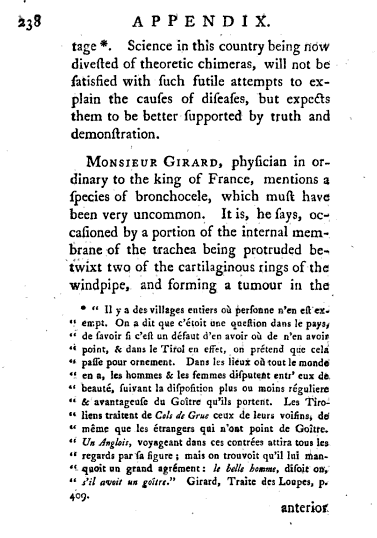 |
| image source: wikimedia commons |
source: The retrospect of practical medicine and surgery, 1852
Syrupus Iodo~tannicus
 |
| source, Year book of Pharmacy, 1903, 1904 |
169.—IODO-TANNIC SYRUP.
This is to be entirely separated by filtration, nnd then repeatedly washed with water, so as to remove any portion of iodine that it may contain; the various strained or filtered liquids are to be mixed logether, and submitted to slow evaporation by means of a vapour bath, and when sufficiently concentrated, the sugar is to be added, so as to produce a syrup, which, when well prepared, should have a fine red colour, and a very agreeable taste. It will contain six centigrammes of iodine in thirty of the vehicle, and it may be preserved without undergoing alteration for an almost indefinite time. In preparing this syrup, care must be taken that glass vessels be employed.
Normal lodo-Tannic Solution.—This solution of iodo-tannin is directed to be prepared by triturating together five grammes of iodine, forty-five grammes of tannin, and one thousand grammes of water. The solution of the iodine and tannin in the water is soon effected, when it is to be filtered, and concentrated, by careful evaporation, until it is so far reduced as to amount to one hundred grammes, after having sedulously examined it by means of starched paper.
Ioduretted lodo-Tannic Solution.—This solution of iodo-tannin is directed to bo prepared in the same manner as the former, by triturating together five grammes of iodine, ten grammes of tannin, and ninety grammes of water, and subsequently promoting the solution in a glass mattrass, by means of gentle heat obtained from a sand-bath. This solution possesses the decided advantage of retaining the iodine it contains, in such perfect solution, that it is not deposited whatever amount of water may be added with the intention of diluting it, lor it thus becomes soluble in every proportion of this vehicle; and it may therefore be substituted for the various solutions of iodine made by the intervention of either alcohol or potassa. The two latter solutions of iodo-tannin are recommended for external use, and the first—the syrup of iodo-tannin—for internal use, by Messrs. Socquet and (G?)uillermond, who, in a paper communicated to the 'Bulletin General de Therapeutique,' state that, in the preparation of the syrup of iodo-tannin, they invariably avail themselves of tannin contained in rhatany root, whereas, in the preparation of the solutions for external use, they make use of tannin obtained from oak-bark.—Annals of Pharmacy. —Dublin Hospital Gazette, Sept. 15, 1854, p. 255.
source: The retrospect of practical medicine and surgery, unknown publication date.






























